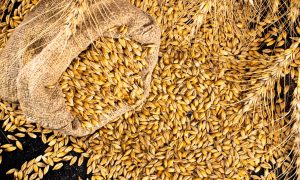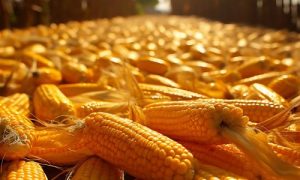Can Technology Uplift India’s Small Farmers? PM Modi Thinks So

The Modi government has transformed agriculture into a pillar of Atmanirbhar Bharat through bold mechanisation policies. Under SMAM, over ₹8,100 crore has supported 19.5 lakh machines and 52,000 Custom Hiring Centres. Backed by skill-building, quality standards, and environmental reforms like the CRM scheme, these efforts empower even small farmers, making them entrepreneurs in India’s journey toward Viksit Bharat@2047.
In a country where nearly half the population is directly or indirectly dependent on agriculture, the centrality of farmers to India’s progress is undeniable. Over the last decade, the Modi-led government has taken unprecedented and transformative steps to not just support the Indian farmer but to empower them as modern agricultural entrepreneurs. This government is not just pro-farmer—it is farmer-first. And nowhere is this commitment more evident than in the strong thrust on mechanisation of agriculture, which stands as a cornerstone of Prime Minister Narendra Modi’s vision of Atmanirbhar Bharat and Viksit Bharat.
The Modi government has made farm mechanisation not just a technology push but a socio-economic mission, ensuring that even the smallest landholders are not left behind in India’s growth story. Recognising that small and marginal farmers face barriers to ownership of costly machinery, the government has designed policies that make modern tools not only accessible but also affordable.
The Sub-Mission on Agricultural Mechanisation (SMAM), implemented from 2014-15 under the Department of Agriculture & Farmers Welfare (DA&FW), is a shining example. Through SMAM, financial assistance is extended to farmers for purchasing agricultural machinery on an individual basis. This support is complemented by the establishment of Custom Hiring Centres (CHCs) and Village-Level Farm Machinery Banks (FMBs), allowing farmers to rent equipment as per their needs, bringing precision farming within reach for the poorest.
This democratisation of technology is not merely an economic intervention—it is a structural transformation of Indian agriculture, enabling millions of farmers to improve productivity, reduce input costs, and preserve soil health.
From Policy To Practice
The numbers tell a compelling story of intent translated into impact. Since the inception of SMAM, Rs. 8110.24 crore has been released to various states. Over 19.51 lakh machines and equipment have been provided to farmers on individual ownership, and more than 52,000 CHCs, Hi-Tech Hubs, and FMBs have been established. This scale of intervention reflects the government’s serious intent to overhaul India’s agricultural backbone.
The government’s proactive approach also extends to pressing environmental issues. The Crop Residue Management (CRM) Scheme, launched in 2018-19, aims to reduce stubble burning in states like Punjab, Haryana, and Uttar Pradesh. Under CRM, Rs. 3607.88 crore has been allocated, leading to the supply of 3.23 lakh CRM machines and the creation of 41,900 CHCs for crop residue management. These interventions are not only improving soil health and reducing emissions but also protecting public health across Northern India.
Quality, Standards And Skills
Agricultural transformation cannot rely on equipment alone—it must be underpinned by quality assurance, skill development, and institutional capacity. In this direction, the Modi government has worked meticulously. The Bureau of Indian Standards (BIS) has released 296 Indian Standards in the agricultural machinery sector, ensuring safety, reliability, and user protection.
Testing and training are integral to this ecosystem. The government has established four Farm Machinery Training and Testing Institutes (FMTTIs) and designated 39 additional centres to rigorously test machines promoted under its schemes. Furthermore, in July 2024, the DA&FW commissioned a national study through the Central Institute of Agricultural Engineering (CIAE) to assess the current landscape and future needs in farm mechanisation and custom hiring.
All this forms a crucial piece of Prime Minister Modi’s larger vision for an Atmanirbhar Bharat—a self-reliant India where farmers are not just beneficiaries but drivers of change. Through targeted support, the government is encouraging rural youth, Farmer Producer Organisations (FPOs), Self-Help Groups (SHGs), and Panchayats to become rural entrepreneurs. Up to 80% financial support is being provided to set up FMBs and CHCs, rising to 95% in the North-Eastern states, underlining the government’s inclusive approach.
This is a paradigm shift. It is not just about giving subsidies, it is about creating sustainable systems and livelihoods that foster innovation, efficiency, and dignity in agriculture.
Towards Viksit Bharat
India’s journey towards Viksit Bharat@2047—a fully developed, inclusive, and prosperous nation—must begin in its villages and farm fields. The Modi government understands this. Mechanisation of agriculture is not an isolated policy but an essential pillar of a modern, technology-driven, and globally competitive Indian economy.
Farmers are not just food producers; they are nation-builders, and this government has demonstrated that it is deeply committed to their success. By combining vision with execution, the Modi government is laying the foundation of a future-ready agricultural ecosystem—one where every farmer, regardless of landholding, has access to tools, knowledge, and markets.
Prime Minister Modi’s leadership has consistently placed farmers at the heart of India’s development journey. From massive investments in irrigation and soil health to the digitalisation of agri-services and now a historic push towards mechanisation, the steps taken are bold, inclusive, and visionary.
This is not just a government that speaks for farmers, it acts for them. With mechanisation as a central pillar, India’s agriculture is not only becoming more productive but also more resilient, environmentally sustainable, and economically rewarding. The seeds of change have been sown. And with continued focus, India is on track to harvest a future where every farmer thrives, and agriculture becomes the engine of national pride and prosperity.
To Read more about Agri Commodity News continue reading Agriinsite.com
Source : Business World















